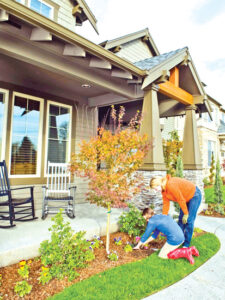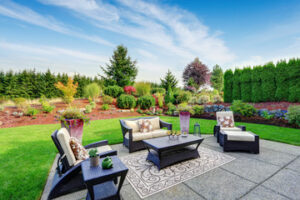Sod is grass specially grown, mowed, and cut like pieces of carpet into strips or squares attached to 1 to 2 inches of soil beneath, held together by roots. This is an excellent solution for patching bare spots or extending existing lawns. It also solves or minimizes landscape problems such as weeds, erosion, and traffic damage.

The cost of Sod And Turf can vary greatly depending on a number of factors. These include your chosen grass type, your location, and who you buy it from. One of the most important things to consider is your local climate and weather conditions. Choosing a sod variety that matches your region and growing seasons is best.
Another factor affecting your sod and turf price is the amount of ground preparation needed before installation. This includes removing old grass and weeds, grading the soil, installing topsoil, and fertilizing. Labor costs will also increase if your lawn has hardscaping features. These can include water features, walkways, brick and stone walls and other obstacles.
Aside from these, a few other factors can influence your sod and turf price. These include the volume of sod you need, if your yard is difficult to access or if the sod pallets sit far from the work area. Regardless of the type of sod you have installed, you will need to take care of it. Proper care and maintenance can help your sod to grow well and look great for years to come.
New sod requires careful watering during the early stages of rooting to establish a healthy lawn. It is important not to overwater it, as this will lead to a weakened root system that can cause new sod failure.
Overwatering can also lead to the formation of root rot, which is a serious problem that can damage new sod and make it die. Instead, water it in smaller amounts and several times during the day.
If you are considering sod for your yard, it is best to contact a professional lawn maintenance team to install it and care for it. This can save you time and money, as well as ensure that your sod grows up strong and healthy for years to come.
Sod is a surprisingly large component of many commercial and residential landscapes, and while it may not be the first choice for your lawn, it’s certainly a worthy contender. For starters, it’s a lot easier to maintain than most turf grasses and can be mowed on a regular basis without fear of damage or disease. For a more permanent solution, you might consider installing one of the many types of synthetic turf available on the market.
The best part is that you can choose the style you want, so you’ll get the looks you deserve and the durability you need. You’ll be able to enjoy your new turf for years to come, no matter the weather or temperature. As far as the actual process goes, it’s a simple matter of preparing the soil and laying your new strand. Be sure to get the right color so your lawn stands out from the rest. You might also want to consider installing a special irrigation system for your new greenery.
Different types of Sod And Turf can be used in your landscape. You can choose the one that best suits your location and weather conditions.
Choosing the right sod can change your lawn and how you interact with it. You need to consider factors like sun tolerance, cost and maintenance requirements.
Some types of sod need full sun to grow while others prefer partial shade or even shady areas. This will affect how much water and fertilizer you need to keep your new grass healthy.
Sod is a fast-growing alternative to seed and has the advantage of weed control, making it ideal for slope areas or those prone to erosion. The downside is that only a few varieties of grass are grown for sod.




